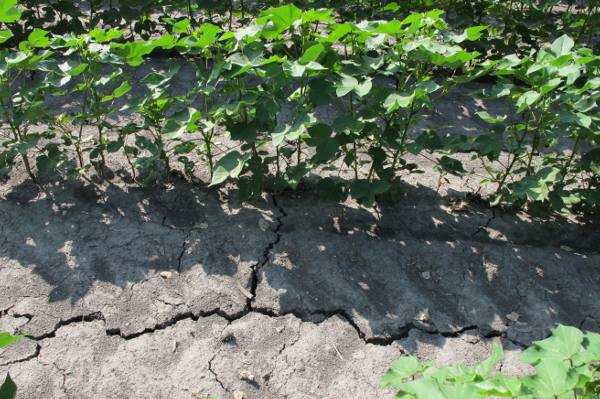
Most Texas cotton, irrigated or dryland, could use rain soon
Abnormally dry weather reclaimed large parts of the eastern half of the state during the last week of May.South Texas also turned drier.South Texas cotton is starting to flower, but rains have been scanty for the last couple of weeks.
June 5, 2012

The drought situation in the western half of Texas remained largely unchanged, but abnormally dry weather reclaimed large parts of the eastern half of the state during the last week of May, according to the U.S. Drought monitor and Texas AgriLife Extension Service reports.
After good rains a few weeks ago, South Texas also turned drier, with moderate drought to abnormally dry weather stretching from the Lower Rio Grande Valley up the Coastal Bend area.
A drier trend is hard on all crops, but it comes at a critical time for cotton in many parts of the state, said Dr. Gaylon Morgan, AgriLife Extension statewide cotton specialist, College Station.
“I was in the Rolling Plains last week,” Morgan said. “In the Haskell area planters were really rolling where they have irrigation and received some recent rains in the central section of the Rolling Plains.”
It was a different story in the northern and southern portions of the Rolling Plains, he said, where it’s mainly dryland farming. The producers he talked to last week were holding back on planting, hoping to get enough moisture to at least get the crop up.
“However, they will soon be up against the planting date deadline and will have to start planting,” he said.
Morgan noted even where there is irrigation in the Rolling Plains, the producers, like their South Plains counterparts, will need timely rains to supplement irrigation.
“They had some surface moisture to establish the cotton crop, but they didn’t have any deep moisture, and their wells don’t have a lot of capacity, and they didn’t get much aquifer recharge after last year,” Morgan said. “I think they’re cautiously optimistic that they can make a crop between predicted normal rainfall and supplemental irrigation.”
South Texas cotton is starting to flower, but rains have been scanty for the last couple of weeks. Morgan was visiting Jackson County for a field day on June 4, and said the cotton looked great.
“But they had cracks in the ground 2 inches wide and probably several feet deep, so the moisture has to come fairly quickly if the crop is going to maintain its good yield potential,” he said.
Though most of the state’s cotton is grown in the South Plains and Rolling Plains, more than a-half million acres are grown between the Coastal Bend and the Lower Rio Grande Valley, according to Morgan.
“Overall the cotton in the Blacklands looks good,” he said. “However, the cotton plant is about to reach the stage of high water demand and will need a good rain in the near future to ensure good fruit set. Producers with irrigation capability are irrigating their cotton while some are holding off a week hoping for a rain in the next week.”
More information on the current Texas drought and wildfire alerts can be found on the AgriLife Extension Agricultural Drought Task Force website at http://agrilife.tamu.edu/drought/.
You May Also Like



